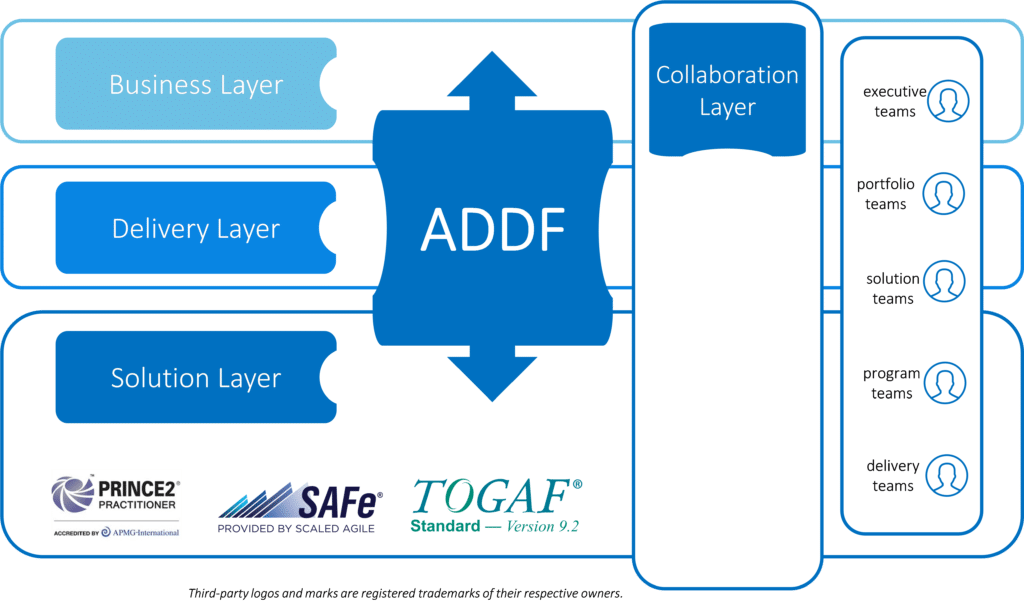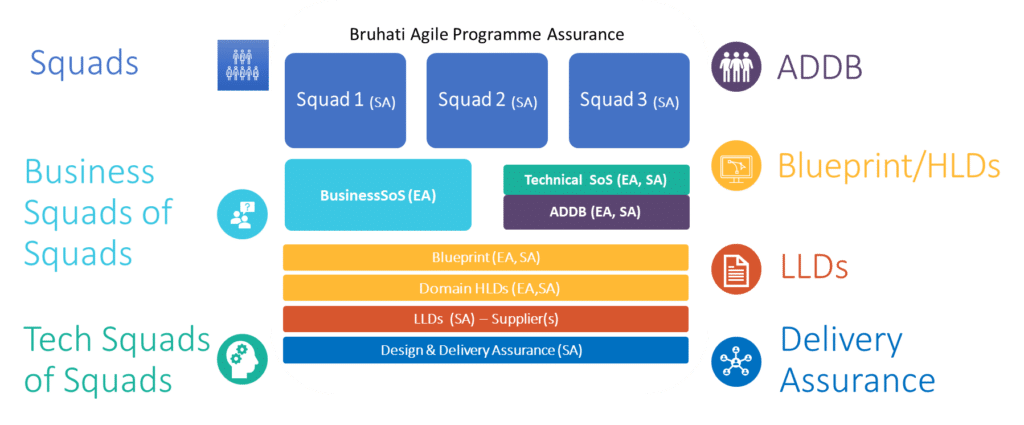Feel free to comment and subscribe to be notified when a new article is published.
Effective Architecture Standards and Frameworks for UK Government - Delivery Framework:

Introduction
Government Digital Services (GDS) is an organisation setting and enforcing standards for digital services, and providing best practice guidance and advice for consistent, coherent, high quality services. GDS advise to Government organisations is to use an Agile approach to deliver change called GDS framework. There are many aspects of agile architecture and design work to be considered like:
- The approach to programmes governance.
- Managing parallel work.
- Redefining roadmaps.
- Controlling change to the emergent architecture and alignment with the planned architecture.
- Enabling effective synergy between business, delivery and solution teams.
- Focussing on delivering high business value within a continuous delivery.
There are many benefits that can be achieved through the introduction of Architecture Standards and Frameworks:
- Having full control over the architecture and design lifecycle.
- Reporting in near real-time the activities status.
- Aligning stakeholders of complex transformation programme across all levels.
- Delivering a solution that is aligned to the business cases, enterprise architecture strategy, plans, business and technical KPIs.
- Providing end-to-end design assurance and requirements traceability across all deliverables.
The GDS Framework encompasses the following phases:
- The discovery phase where business problems are understood and analysed.
- The alpha phase is where different options to solve the problems are evaluated and tested (e.g. via Proof of Concepts or paper-based exercises).
- The beta phase is where organisations take the best option from alpha and start building it for real.
- The live phase is about launching a live service and iterating it to make improvements.
- A service eventually is retired, this is the last phase of the GDS framework.
GDS also suggests a portfolio management framework that is described here and we are mapping against our assurance framework in the sections below. For more details refer to the GDS Blog, Scaling Agile Practices to the GDS Portfolio.
In a previous article article we provided an overview of proven Software Architecture Standards and Frameworks for mature software engineering practice. Outlining its applicability to UK Government guidelines, through the adoption of an Architecture and Design Assurance Framework (ADAF). ADAF naturally supports GDS portfolio management framework and beyond.
We now discuss best practice governance in an agile environment through the adoption of an Architecture, Design and Delivery Framework (ADDF), and the correct team structure. ADDF supports and complements GDS framework.
Best practice governance in an agile environment
Often, organisations that use agile to deliver large transformation programmes come unprepared and must spend valuable time and effort in redefining processes and artefacts to govern the programme delivery. Some common issues with organisations trying to adopt agile are:
- Struggling to scale agile to an enterprise-wide scale.
- Ineffective control of the emerging architecture.
- Lack of governance, effective documentation, and the right toolset to manage it.
- A disconnected organisation that lacks decision making ability.
In recent years, the introduction of Scaled Agile Framework (SAFe) has proven that a balance of agility and governance means:
- Having a clear architecture vision.
- Following the right standards.
- Introducing an ongoing governance, often informal, but supported with some formal gates.
- Being accountable and owning deliverables and decisions.
- Customising products only when strictly necessary.
Effectively implementing an agile governance can help organisations to:
- Bring business value first.
- Introduce a customer-focused approach.
- Reduce time to market.
- Control costs.
- Improve the quality of products.
- Align all levels of the enterprise that are involved in solution development.
- Make delivery predictable and simplified.
- Simplify change and reduce the amount of design required upfront.
- Make the Architecture team more visible and effective in the organisation.
- Offer better control over the organisational transformation outcomes.
There are two main activities to effectively implement governance in an agile environment:
- The introduction of an Architecture, Design and Delivery Framework (ADDF) that offers a standard set of processes, tools and templates to deliver transformation.
- A governance structure that involves architecture and design in each part of the digital transformation value chain.

Architecture, Design and Delivery Framework
Deployment of an Agile Architecture and Design Framework (ADDF) tailored to the organisation is key to successful transformation. Such a framework must include the definition of tools, processes, templates, metamodel, and taxonomy that will be used to model, document and govern the architecture and design of the solution.
Business Layer
In this phase, architecture team should support business executives and delivery teams to define and refine business objectives, architecture and processes. It is best practice to implement business architecture and process models that follow the ArchiMate notation, using any of the best-in-breed enterprise architecture modelling tools and techniques.
Delivery Layer
In this phase, architecture team support business executives and programme managers for programme scope definition and delivery management. It is best practice to implement delivery tools to govern the delivery lifecycle in near real-time.
Solution Layer
- In the solution phase, architecture team define and explore strategies and release architecture and designs. This layer offers a platform to define both the planned and the emerging architectures. It is best practice to deliver programme architecture and design activities with the support of a strategic enterprise architecture repository.
- With the implementation of an effective repository, organisations can easily drive impact assessments, connecting epics and user stories to processes, applications and interfaces that are impacted by them. Vice versa, given a business capability, an organisation can identify all applications and interfaces that support it. Furthermore, they can achieve end-to-end design traceability, linking application designs to strategic themes, epics and user stories in scope of each release.
Governance Structure
Architects should provide templates and guidance on how to define, manage and govern architecture and design deliverables, and set up an effective architecture team. Together with a well-defined set of deliverables and tools, organisations require an effective team structure to control the emerging architecture throughout agile releases and delivery sprints, like the one below.

The diagram above shows a team structure that can be used to govern a large agile transformation (based on Scaled Agile Framework). Here are the activities that architects should be involved in:
- Architects are deployed in one or many Squads and take care of defining the emerging architecture against a specific set of Scope Themes and keep it aligned to the strategic architecture.
- Architects are supporting Business Squad of Squads and running Technical Squads to govern the evolution of the release making sure that business and technical issues are resolved.
- Architects that are part of the Architecture, Design and Delivery Board (ADDB) are controlling the alignment of the emerging architecture with the strategic architecture.
- A set of artefacts like blueprints (or end-to-end HLDs), Domain level HLDs and Low-Level Designs LLDs are required and should be written or governed by the architecture team.
- Ultimately, architecture and design teams should be involved in design and delivery assurance. Validating that what has been architected and designed is then implemented by suppliers.
Since agile offers the opportunity for continuous improvement, when deploying standards and frameworks, architecture teams should continuously measure and refine the overall maturity level of their agile architecture using processes and tools (such as a centralised and customisable reporting dashboard).
Our partner Bruhati have a successful track record in helping organisations through their Architecture Maturity Journey and working with Government in delivering strategic nation-wide change. For more information and a FREE consultation please visit www.bruhati.com or contact sales@bruhati.com.



